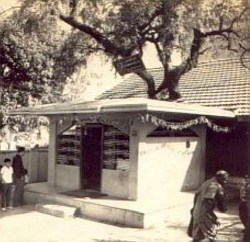 By 1910 the village of Shirdi had become slightly more prosperous, though Mrs Tarkhad, a Sai Baba devotee and regular visitor from Bombay, still found it “little more than a neglected hamlet without any lighting, sweeping or other conveniences of civilization… The streets and passages were all dark and unlit at night.” By then, Baba’s mosque had already taken on the character of a darbar (royal court), which it was to retain till the end of his mortal days.
By 1910 the village of Shirdi had become slightly more prosperous, though Mrs Tarkhad, a Sai Baba devotee and regular visitor from Bombay, still found it “little more than a neglected hamlet without any lighting, sweeping or other conveniences of civilization… The streets and passages were all dark and unlit at night.” By then, Baba’s mosque had already taken on the character of a darbar (royal court), which it was to retain till the end of his mortal days.
Shirdi Village
Shirdi village was located in the Ahmednagar district, and prior to canal irrigation, had poor soil; it was in the nineteenth century a famine stricken area with dry land. The population at the time of Sai Baba was engaged in farming and agricultural activities.There were few shops in the village, and a small population resident in about two hundred dwellings, a tightly packed village. There were few shops, and a permanent market was in a nearby town. The kinds of items sold in these shops were grains, salt, oil, sugar, soap, tea, tobacco, betel-nuts and so forth. The majority of the population was Hindu, with perhaps 10% Muslim, who worked mainly as artisans or field labourers.
The main Hindu temples were that of Maruti and Khandoba. Maruti’s temple, a small construction, was situated near the masjid. In most villages in the Deccan, the chief village god is Maruti, or Hanuman, whose temple is considered the entrance to the village. Maruti is “considered” to be an avatar of Shiva, and a festival is held in his honour in the bright half of the month of Caitra (March-April). His sacred day is Saturday, fresh oil and red lead are offered to him by the devotees.
The Khandoba temple, which Mhalsapathi was the priest, was situated outside the village and was a much larger edifice. Khandoba is a form of Shiva, worshipped mainly in the Deccan, and is a family god as he is often depicted with his five wives. Interestingly, there is a tradition of Muslim veneration of Khandoba. He is called Mallu or Ajmat Khan (Rautray) by Muslim devotees, and many times portrayed as being a Muslim himself. Some of these distinguishing Muslim features include his usual appearance as that of a Pathan on horseback, one of his wives being a Muslim, and that his horse-keeper is a Muslim.
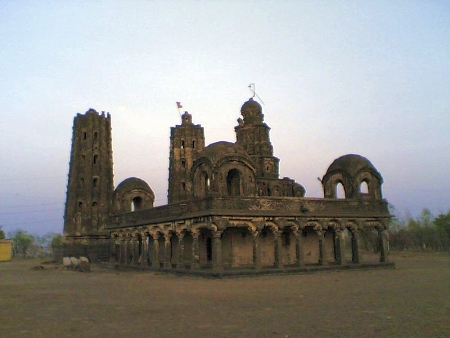
It is said that when he first arrived in Shirdi, Sai Baba roamed the village and sought to stay at the Khandoba temple; Mhalsapathi (who was later to become an ardent devotee) thought he was a fakir and denied him permission. It is possibly the same Mhalsapathi who later invited Sai Baba to take up residence in the masjid, thought to be the most fitting place for a fakir.
The wife of the village ‘manager’ called a patil was very taken by Sai Baba and brought him food daily. She often had to roam around the forest to find him. Sai Baba himself continued to roam and later roamed the byways of Shirdi, often muttering to himself. Villagers took no notice of him and thought him a holy mad-man, a pagal. Soon, Sai Baba got in the habit of visiting four or five houses daily, begging his food there. He would gather solid foods in his begging bag, and reportedly had the habit of sharing his food with the poor, along with birds, dogs, insects and so forth. Often, he would only eat after leaving his dish outside the masjid at the disposal of anyone who wanted food.
Sai Baba, at the masjid, seems to have led a solitary life. He was frugal in his speech, and usually only spoke if he was questioned. One Madhavroa Desphande, a teacher in a primary school of the village, recalled how he could hear Sai speaking at night inside the masjid in many languages: Hindi, English, and others unknown to him.
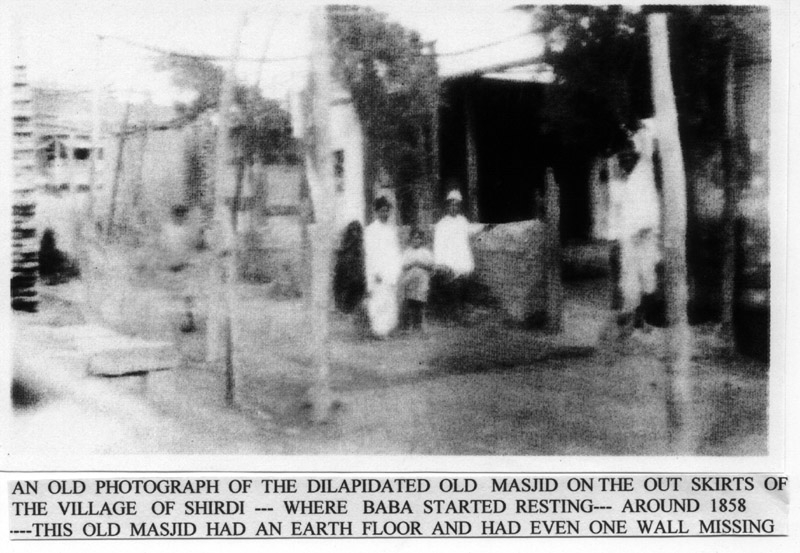
Activities in Shirdi
Contrary to his usual reserve, at night he sometimes went to the takiya, a resting place for Muslim visitors. Here, he sang devotional hymns, among which figured some popular motives attributed to Kabir. He apparently also sang in Persian or Arabic, languages the local people could not understand. He is described tying bells (ghungur) to his ankles and dancing, enraptured in ecstatic joy.
Sai Baba’s abode in the masjid brought him into closer contact with the local people. He would sometimes perform healing acts, collecting herbs and inexpensive drugs from local shops and apply them to the sick. He is said to have cured snake bite, leprosy by using snake poison, and “rotting eyes” by using nuts for an alkaline aseptic.
At this time it was reported that the young fakir Sai Baba was attired in a white turban, clean dhoti and a shirt. There are narratives of some interaction with a large wrestler who was defeated by Sai Baba in contest. The wrestler demanded a return bout and should Sai Baba lose, he would have to change his clothing and don a kafni (a long robe). It was said that Sai was in no mood to enter the arena again, and conceded the fellow the victory he sought, and donned the kafni and kerchief on his head. The wrestler was filled with remorse and pleaded with Baba to resume his former style of dress and released him from the obligation. But the young Sai Baba stuck to his word.
At this time the dilapidated mosque became the centre around which Sai Baba’s life revolved. Inside, Sai Baba built a dhuni, that is, a sacred wood-fire which he kept perpetually burning. Sai Baba is described as sitting in front of the fire, facing the south, keeping his left hand on a wooden support, a typical aid used by Indian ascetics. The local villagers reported seeing him sitting in front of the fire for hours. From the dhuni he would draw the sacred ash (udi) which had healing power. Sai Baba no longer used herbs or concoctions for healing requests. Inside the masjid was a large, flat stone on which Sai Baba would sit for hours in his typical posture, his right arm resting on his right thigh or lap, the foot or the ankle on the opposite knee, and the head slightly inclined in an attitude of contemplation or reflection. The left hand lies on the foot or the ankle of the crossed leg.

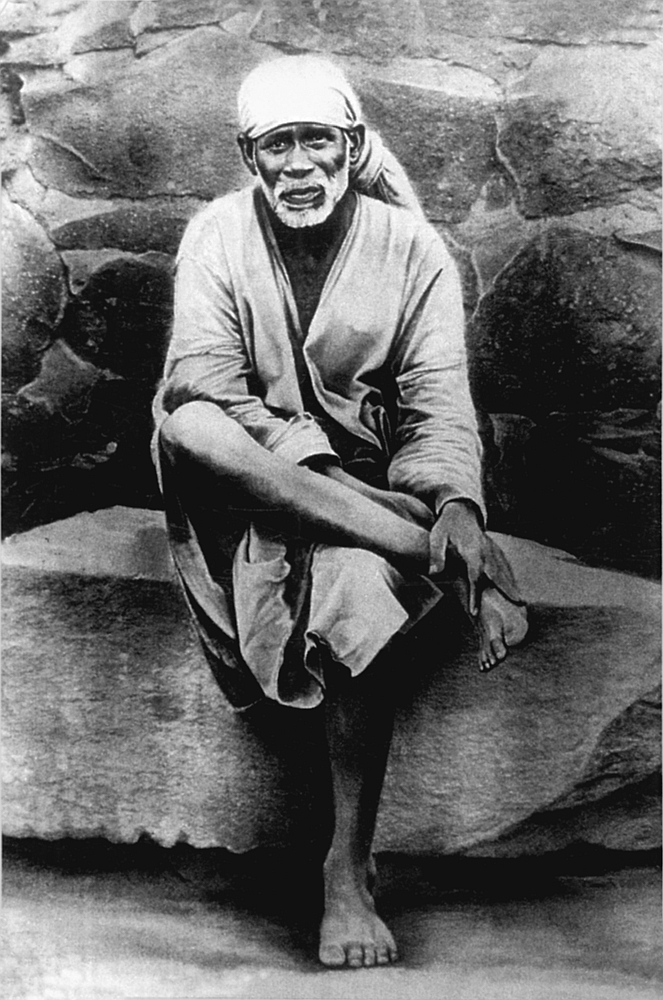
Such a posture in Indian iconography represents sovereignty and is the prerogative of gods and rajas alone.
It was around this time that the tradition of Sai Baba’s miraculous powers (siddhi) began to grow. One Nanasahheb who had no son interceded with Sai Baba for male progeny, and after some time, Nanasaheb got a son. Many other instances of Sai Baba granting offspring to couples is recorded. Baba’s touch, words such as Allah karega (Allah will do this) or that Faqir is good and even his glance were thought to be powerful enough and produced the desired effect. Due these and other miraculous occurrences, Baba’s presence increased significantly, to the point that several people started revering him as a saint possessing special powers.
A few Hindus began offering him some kind of worship inside the masjid, though it is told that Sai Baba strongly disapproved. The Muslims of the village protested against this practice, for in their eyes it was an obvious sign of impiety and idolatry. One Muslim challenged Sai Baba when sandal paste was being applied to his forehead. Baba had to appease him by pointing out that he had to bend to circumstances. Baba replied, “Jaisa Desh, Aiysa Vesh”, meaning, When in Rome, do as Romans do. On other occasions, Baba pointed out that if Hindus wished to please themselves by worshipping him inside a mosque, it was no loss to Islam, but only to Hinduism.
Baba’s fame grew, and the rivalry between the two communities claiming Baba as their own grew. Baba himself maintained an ambiguous profile, unwilling to identify with either of the two religions. When pressed on whether he was a Hindu or a Muslim, Baba would get very angry and abuse people. Baba would often talk about the Hindu gods, sometimes quoting sacred texts from the Bhagavad Gita, or Isa Upanishad; with his Muslim followers, Baba would always talk of Allah and the Koran, often quoting Persian verses. It is said that one of his favourite expressions was Allah rakhega vaisa rahena, meaning, “Let us be content with what we have and submit our will to Allah”.
This it was that many came to Baba from many faiths. In later years, Parsis and even a few Christians would come to Shirdi and visit Sai Baba. All had free access to the masjid: outcasts, lepers, dogs, birds, etcetera. This is one reason why the masjid came to be known as Dwarakamayi, “the many-gated mother”. Dwaraka literally means many gated, and mayi means mother. The masjid or Dwarakamayi began to attract more and more people from surrounding villages.
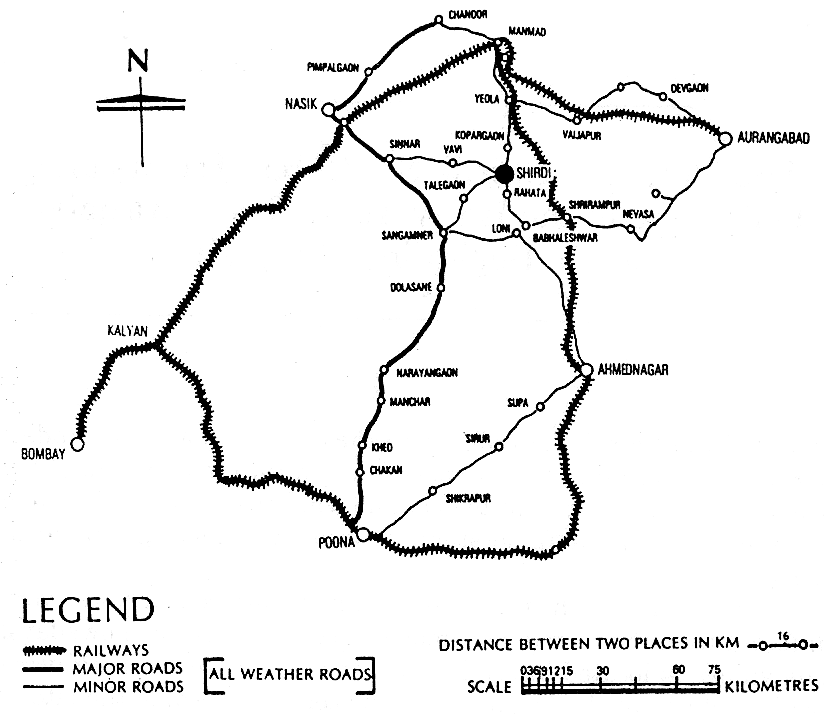
This page last updated 04 November 2019
This page first updated 4 March 2001
© Saieditor.com
![]()

